History tells us that interest rates alone cannot moderate house prices unless political leaders boost dwindling supply and remove the economic blockers that make it ever more expensive to build, buy or rent a home.
Although rising interest rates put some downward pressure on purchaser demand, which can impact prices of established homes, historical data since the 1980s shows that four interest rate spikes have not materially reduced prices.
“The downward impact of interest rates has been offset by other factors that increase house prices including cost of construction and declining supply,” said Maxwell Shifman, Urban Development Institute of Australia National President.

While interest rate rises indicate a growing economy and can help moderate demand, they also increase the cost of business, materials and consumer debt, adding to the cost of purchasing and creating new and affordable homes. “The combination of declining housing supply pipelines and increasing costs will further reduce project viability, creating more scarcity and adding cost pressures for the housing that can still be created,” said Shifman, “It’s a vicious loop, unless policies to unlock supply and reduce costs are deployed.”
“In 2022 greenfield lot delivery is estimated to plummet by 43% due to lack of supply, and interest rate increases are unlikely to dampen demand that same extent. Ultimately, prices will continue to rise,” added Shifman, “though fewer people will be able to afford to buy. “
In its recent State of the Nation’s Housing report, NHFIC predicts a national annual housing shortfall of around 20,000 by 2025, and 727,000 social/affordable dwellings will be required over the 20-year period 2016-2036.
Rising rates will impact the hip pocket of ordinary Australians trying to pay off their mortgage or buy a home, even though they moderate demand for housing in the process.
A reduction in housing demand is cold comfort, if financing new or existing housing becomes more expensive and there isn’t enough supply to satisfy even a reduced level of demand.
Recent Canstar analysis shows that a 1% interest rate rise on an average $602,000 mortgage would see repayments escalate by $309 a month ($3,713 a year).
Equally, the increasing costs associated with building and construction is deeply impacting home buyers, renters and ordinary Australians who depend on government housing subsidies.
Taxes, statutory charges and levies on Greenfield sites, combined with regulatory barriers can add as much as 44% to the cost of new housing.
With the average price of new houses in Australia being between $525,000 and $1.13m in our capital cities, this translates to between $231,000 and $497,000 in government taxes and charges on new dwellings.
Keeping prices for housing down also depends on developers having ready access to debt for new projects. That means industry, RBA and Government all need to work together to ensure debt is not artificially constrained by unsubstantiated risks and unnecessary complexity and red tape.
Failure to deal with these issues translates into higher costs with the burden worn entirely by new homeowners and renters across the spectrum.
“Much of the pain from interest rate rises can be eased if political leaders work together to boost housing supply and reduce unnecessary costs,” said Max Shifman.
“Our UDIA Federal Election Campaign platform – A Plan for Prosperity – contains relatively straightforward solutions such as boosting enabling infrastructure, rezoning, streamlining approval systems, increasing stamp duty thresholds to lower prices and establishing a Property Finance Reference Group with industry to monitor market performance and headwinds,” he said.
UDIA National is keen to work with all political leaders to create efficiencies that boost supply and reduce the costs of delivering new housing to help shield Australians from impending interest rate movements.
—ends—
Media Enquiries:Deanna Lane | National Media & Communications Manager | 0416 295 898 | media@udia.com.au

